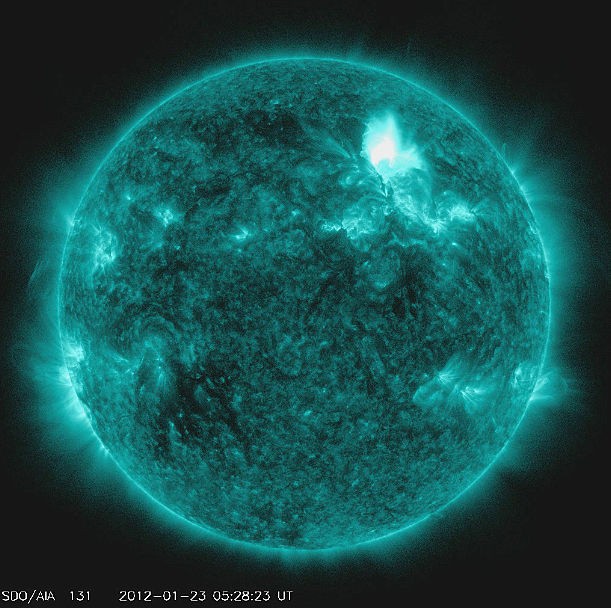The latest solar flare is just a manifestation of a reportedly looming catastrophic solar storm of our time.
The Sun just released its strongest solar flare ever recorded since 2017.
The explosion was massive enough to release a geomagnetic storm that resulted in a reported radio blackout over recent days.
Strongest Solar Flare

The National Oceanic and Atmospheric Administration (NOAA) - Space Weather Prediction Center (SWPC) issued a solar storm alert after our solar system's only star released a gigantic solar outburst from sunspot region 2992 in the western limb of the Sun on Tuesday, April 19.
The latest space phenomenon is the most powerful of the current solar cycle and also led to the emission of a coronal mass ejection (CME), which was fortunately not directed to Earth.
However, the solar storm sent highly-energized particles from a magnetic storm that disrupted our radio signals.
The NOAA - SWPC classified the solar flare as an "X2.2 flare (R3-Strong Radio Blackout)" associated with multiple bursts targeting specific radio frequencies.
Space weather forecasters from the US agency suggested that the CME is not likely to hit Earth.
According to the National Aeronautics and Space Administration (NASA) - Solar Dynamics Observatory, our star also emitted not one but two solar flares, ranging between moderate and strong in intensity.
The solar explosions peaked at 9:35 p.m. EST and 11:57 p.m. EST on Tuesday.
Radio Blackout in Asia
NASA defines a solar flare as an immense burst of energy. Such a solar eruption can cause disruption to radio and satellite communications, as well as to electric power grids and navigation signals.
Since a solar flare disrupts the global positioning system (GPS), which is used by various digital devices, and equipment, it poses a threat to commercial planes and other aircraft, as well astronauts on a spacecraft.
The recent solar outbursts resulted in a radio blackout for aviation, certain shortwaves, and other communications that rely on satellite and radio signals in Asia, according to NASA's Solar Dynamics Observatory, as cited by the US-based news site CNET.
Solar Storm and Sun Cycle
Our Sun's magnetic field goes through a solar cycle that transpires approximately every 11 years, said NASA.
Since our star is a large ball of hot gas, these charged particles also move and generate a magnetic field.
The cycle pertains to the 180-degree flip of both its northern and southern poles. It is due to this solar process that solar storms, including solar flares and CMEs, occur.
Although the recent solar flare has been perceived as a large one, it is not the strongest solar storm in recorded history.
In 2003, the Sun released gave Earth one of its space weather scares during Halloween when a solar storm disrupted GPS, communications, and even defense operations of the United States, as per Space.com.
Normally seen in the Northern Hemisphere, aurora borealis was seen as far as Florida and Texas during the 2003 solar explosion.
Meanwhile, the Carrington Event of 1859 is still considered the most powerful geomagnetic storm in recorded history during the solar cycle 10 of the Sun, with the current one being on its 25th phase.
The 19th-century solar storm event was significantly intense, it reportedly resulted in incidents of fires and sparks in several telegraph stations.
© 2025 NatureWorldNews.com All rights reserved. Do not reproduce without permission.





